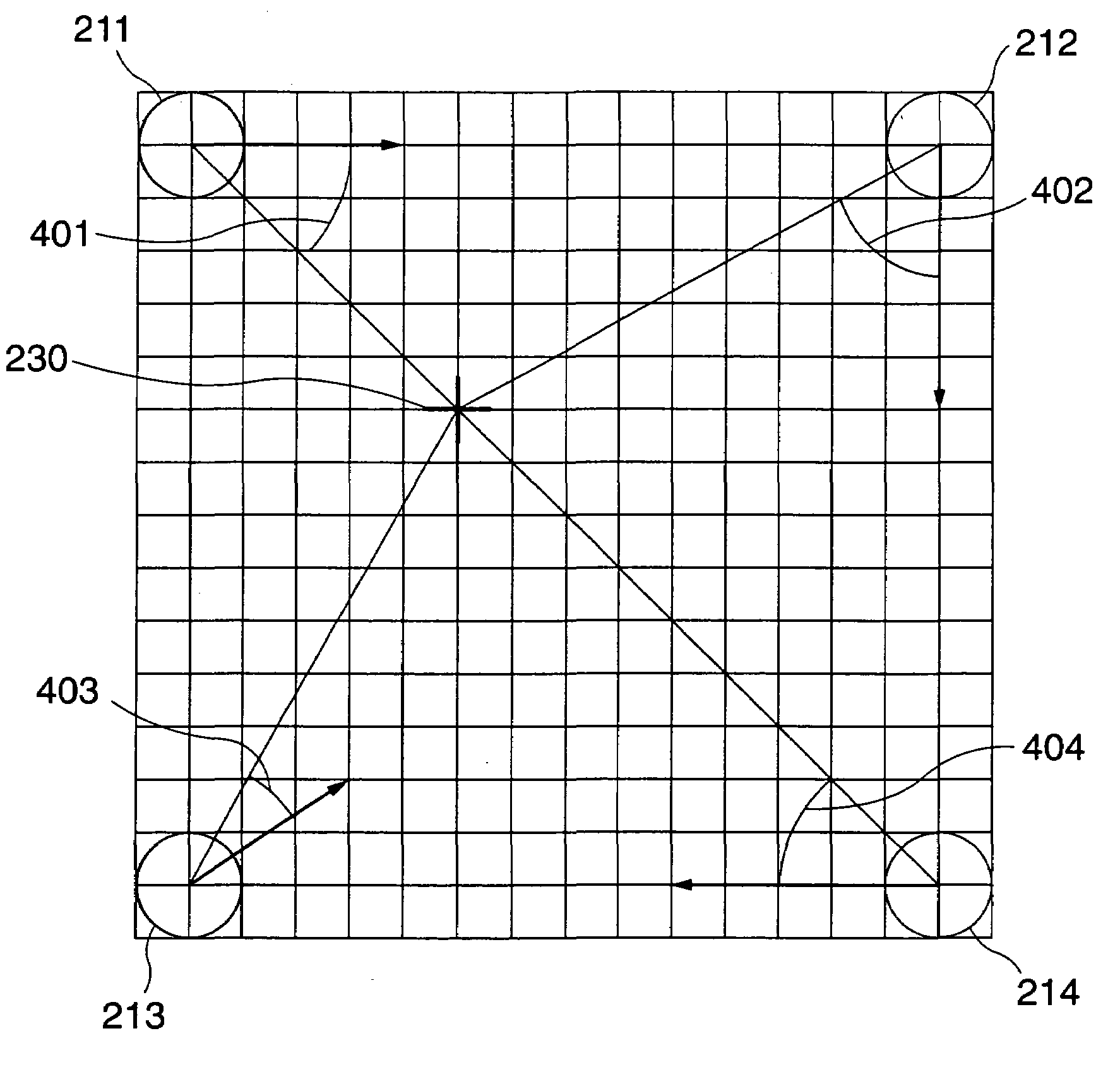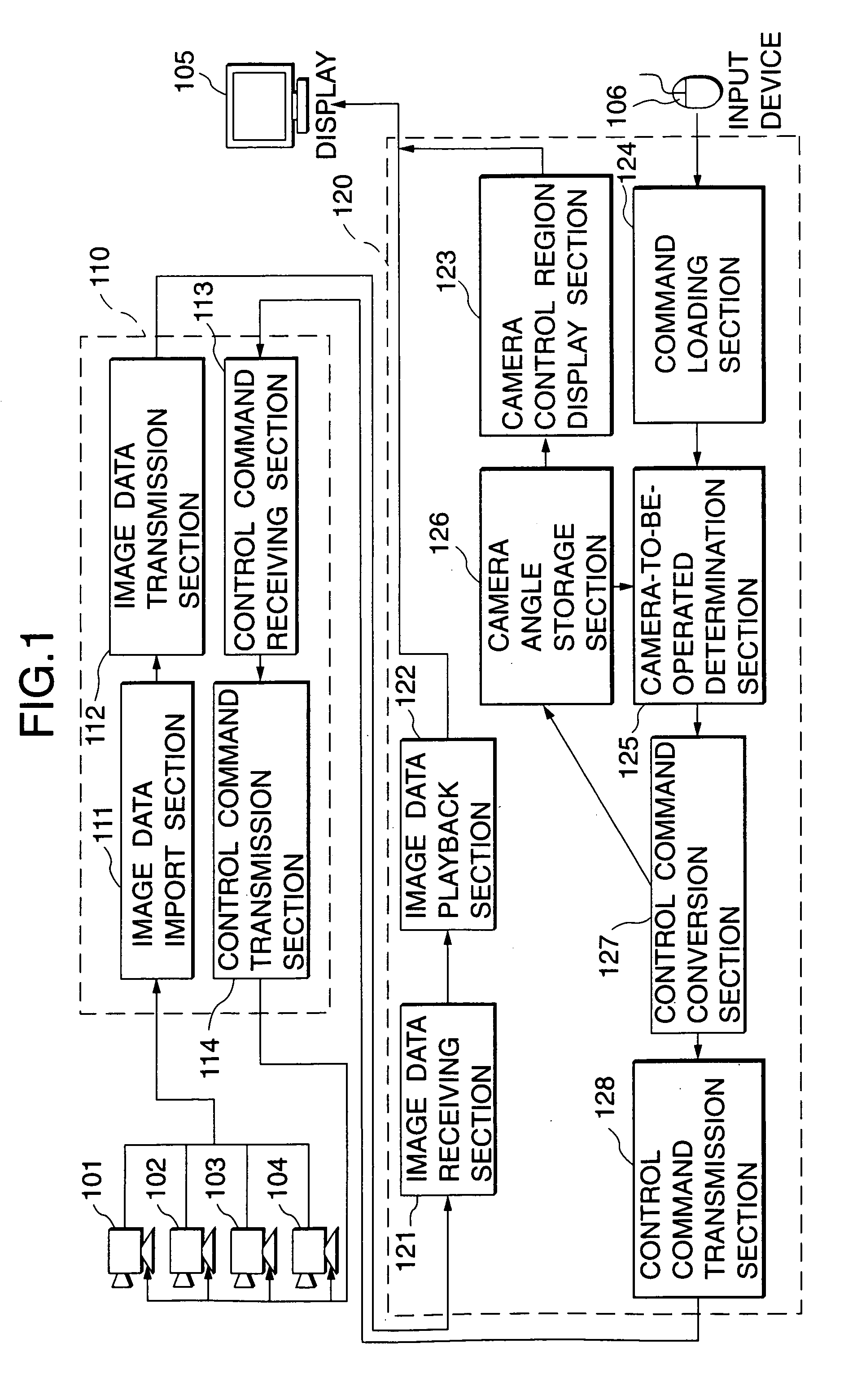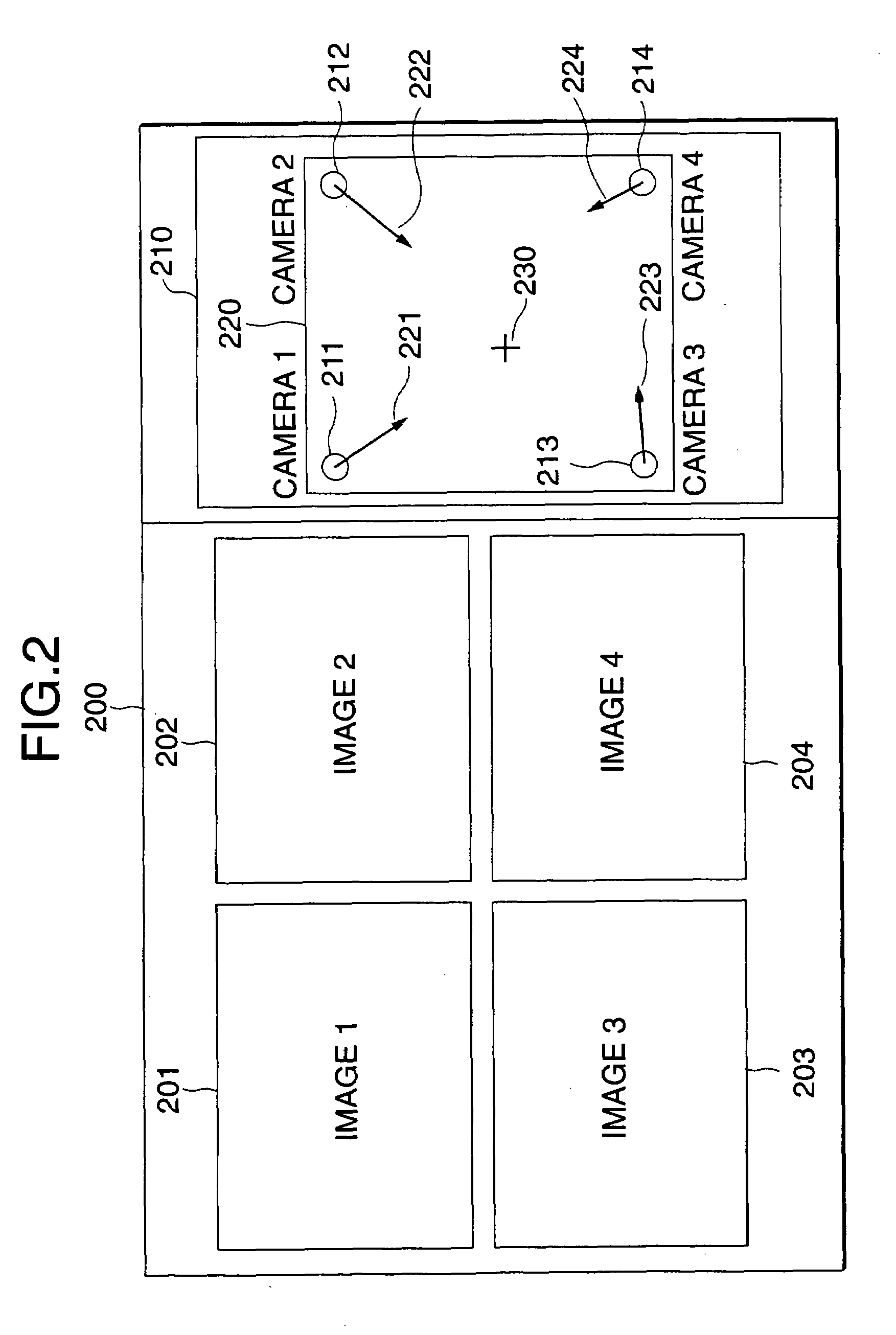Camera control apparatus and method
a control apparatus and camera technology, applied in the field of image receivers, can solve the problems of operator error, impediment to capture the desired image, operator is uncertain of the camera that can shoot the desired location in the least amount of time, etc., and achieve the effect of less operation and more effective image shooting
- Summary
- Abstract
- Description
- Claims
- Application Information
AI Technical Summary
Benefits of technology
Problems solved by technology
Method used
Image
Examples
first embodiment
[0103]The present example is directed to a system comprising an image transmitter for transmitting images captured by a plurality of cameras; and an image receiver which receives the images over a network and display those camera images. The system enables the image receiver to control angles of the cameras connected to the image transmitter.
[0104]There will now be described a camera control method, under which, when an operator instructs a location which he desires to monitor (hereinafter called a “designated location”), by way of an input device connected to the image receiver, a camera capable of panning to and shooting the designated location most quickly is automatically selected from among the plurality of cameras, and the thus-selected camera is panned to the designated location. FIG. 1 shows the configuration of the system which embodies the camera control method. Further, FIG. 2 shows an example layout of a display screen connected to the image receiver in a case where came...
second embodiment
[0119]In example 1, on the basis of the camera angle information, the camera-to-be-operated determination section 125 determines, as a camera to be operated, the camera capable of most quickly panning toward a location designated by the operator, and produces a command used for actually panning the thus-determined camera. In the present example, there will be described a method of panning another camera rather than the thus-selected camera in the event of presence of an impediment along an imaginary extension between the camera and the designated location. FIG. 6 shows the configuration of a system embodying the method, and FIG. 7 shows an example impediment 701 on the map 220 provided in the camera control region 210 displayed on the screen 200 of the image receiver 120.
[0120]In FIG. 6, reference numerals 101, 102, 103, and 104 designate cameras; 110 designates an image transmitter for transmitting image data; 120 designates an image receiver for receiving the image data and playin...
third embodiment
[0135]In the first embodiemnt, the image receiver 120 selects a camera capable of panning toward the designated location most quickly, on the basis of the angles of the cameras. In the present example, two factors are employed as conditions for selecting a camera to be operated; that is, the angle and focus of a camera. In order enable comparison among cameras in terms of two factors of different scales; that is, between the angle and focus of the camera, these factors are converted into two factors capable of being compared; that is, the time required for the camera to pan toward the designated location, and the time required for the camera to attain a focus on the designated location. The configuration of a system embodying the method of the present invention is shown in FIG. 10.
[0136]The image receiver 120 of the present example corresponds to the image receiver of the first embodiment additionally provided with an angular-shift-time calculation section 1001 for calculating the t...
PUM
 Login to View More
Login to View More Abstract
Description
Claims
Application Information
 Login to View More
Login to View More - R&D
- Intellectual Property
- Life Sciences
- Materials
- Tech Scout
- Unparalleled Data Quality
- Higher Quality Content
- 60% Fewer Hallucinations
Browse by: Latest US Patents, China's latest patents, Technical Efficacy Thesaurus, Application Domain, Technology Topic, Popular Technical Reports.
© 2025 PatSnap. All rights reserved.Legal|Privacy policy|Modern Slavery Act Transparency Statement|Sitemap|About US| Contact US: help@patsnap.com



